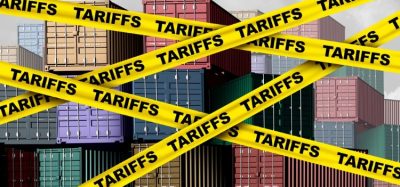Biosimilars – future prospects
Posted: 30 June 2016 | David Elder (JPAG member and consultant) | No comments yet
Biologically-derived drugs, such as proteins, peptides and monoclonal antibodies (mABs), are playing an increasingly important role in global healthcare. It was recently reported that mAB therapeutics sell for over $50 billion globally. However, one of the major downsides of biological therapeutics is their significantly greater costs compared with small molecule drugs, which puts an increased burden on global health services…
Biosimilars should, in theory, provide a lower cost alternative to the more expensive innovator drugs. However, there are several impediments to biosimilar approval. Determination of therapeutic equivalence based on demonstrating bioequivalence (equivalent pharmacokinetic parameters of test and reference compound) is the cornerstone of small molecule generic regulatory approval, but this approach cannot be used for biologicals. The main reason is that due to the chemical and physical complexity of biologicals, including differences in conformational structure and post-translational modifications, bioequivalence testing, whilst demonstrating similar efficacy, cannot fully show that the test and reference compounds will have similar safety profiles2 . Biosimilars cannot, therefore, be viewed as true generics. Instead they exhibit a high level of similarity to the reference product and can be considered to be both biologically and clinically similar to the innovator product. Therefore, the development process for biosimilars is significantly more complex than for a true ‘generic’2.
The United States Food and Drug Administration3 and the European Medicines Agency (EMA)4 both provide guidance for the development of biosimilar drugs. Biological manufacturers typically ‘lock-down’ the manufacturing process as early as possible before pivotal clinical studies. However, this approach is challenging and ICH Q5E5 provides ‘comparability’ guidance as part of a change control mechanism. ICH Q5E highlights that the primary goal of a comparability exercise is to provide assurance of quality, safety and efficacy of a biological product produced when there are changes in a manufacturing process. This guidance further highlights that there are no requirements for identical quality attributes, but that they should be highly similar. However, these differences should have no adverse impact on either safety or efficacy. The comparability protocol can be based on a combination of both analytical and biological assays, as well as both non-clinical and, if required, clinical data. Clinical testing may be required if there is no defined relationship between specified quality attributes and safety and efficacy end points.
Biosimilar drugs are expected to play a major role in the clinical management of various diseases in the future. To date, about 17 different biosimilars have been approved in Europe6, covering several different therapeutic classes: granulocyte colony-stimulating factors, erythropoiesis-stimulating agents (ESAs), somatopropins and recently, mABs that specifically target tumour necrosis factor7. In Europe, variations between different reimbursement approaches have led to contrasting pricing outcomes across the community. However, it does seem likely that the higher development costs and lack of interchangeability for biosimilars will be reflected by premium prices, and that any price discounting will be minimal compared with the low cost of small-molecule generics. For example, to date there have been six biosimilar products approved in Europe that reference the innovator ESA Neupogen® (filgrastim), and in March 2015 the FDA approved the first biosimilar product in the US, Zarxio (filgrastim-sndz), a biosimilar form of Amgen’s Neupogen6.
In the US, there are several barriers for biosimilars to circumvent before making it to market: regulatory exclusivity, biosimilarity requirements as defined by the FDA’s Biologics Price Competition and Innovation Act (BPCIA)3 and patent exclusivity considerations. BPCIA does include a structure to resolve patent disputes, which involves extensive information exchange and negotiations between innovator and the biosimilar manufacturer(s). However, thus far, and not unsurprisingly, most biosimilar manufacturer(s) have chosen not to divulge confidential development and manufacturing processes to competitors and most patent disputes involve classical infringement and invalidity arguments6. In addition, competition may be also constrained by the ongoing development8 of improved or enhanced forms, e.g., long-lasting pegylated versions (Neulasta) of the original ESA (Neupogen).
In conclusion, it is likely that biosimilars will become increasingly established in both Europe and the US. In addition to proteins and peptides, biosimilar mABs will form a greater part of the future global biological market1. Although pricing will not be reduced to the same extent as for small molecule ‘generics’ it is anticipated that biosimilars will see some pricing discounts, i.e., 50-70%7 compared with the reference molecule, which will benefit global healthcare systems.
References
- Udpa N, Million RP. Monoclonal antibody biosimilars. Nature Rev Drug Discov 2016; 15: 13-14
- Jeske W, Walenga JM, Hoppensteadt D, Fareed J. Update on the safety and bioequivalence of biosimilars – focus on enoxaparin. Drug Healthc Patient Saf 2013; 5: 133-141
- Improving access to Innovative Medical Therapies: Biologics Price Competition and Innovation Act (BPCIA). 2009 http://www.fda.gov/downloads/Drugs/GuidanceComplianceRegulatoryInformation/ucm216146.pdf. Accessed on 02nd May 2016
- Guideline on similar biological medicinal products containing biotechnology-derived proteins as active substance: non-clinical and clinical issues. 18 December 2014. EMEA/CHMP/BMWP/42832/2005 Rev1, Committee for Medicinal Products for Human Use (CHMP) http://www.ema.europa.eu/docs/en_GB/document_library/Scientific_guideline/2015/01/WC500180219.pdf. Accessed on 02nd May 2016
- ICH Q5E. Comparability of biotechnological/biological products subjected to changes in their manufacturing processes. Current step 4 version, 18th November 2004 http://www.ich.org/fileadmin/Public_Web_Site/ICH_Products/Guidelines/Quality/Q5E/Step4/Q5E_Guideline.pdf. Accessed on 02nd May 2016
- Brinckerhoff CC, Schorr K. Have the biosimilar floodgates been opened in the United States? Nature Rev Drug Discov 2015; 14: 303-304
- Grabowski H, Guha R, Salgado M. Biosimilar competition: Lessons from Europe. Nature Rev Drug Discov 2014; 13: 99-100
- Miller KL, Lanthier M. Innovation in biological new molecular entities: 1986-2014. Nature Rev Drug Discov 2015; 14: 83








